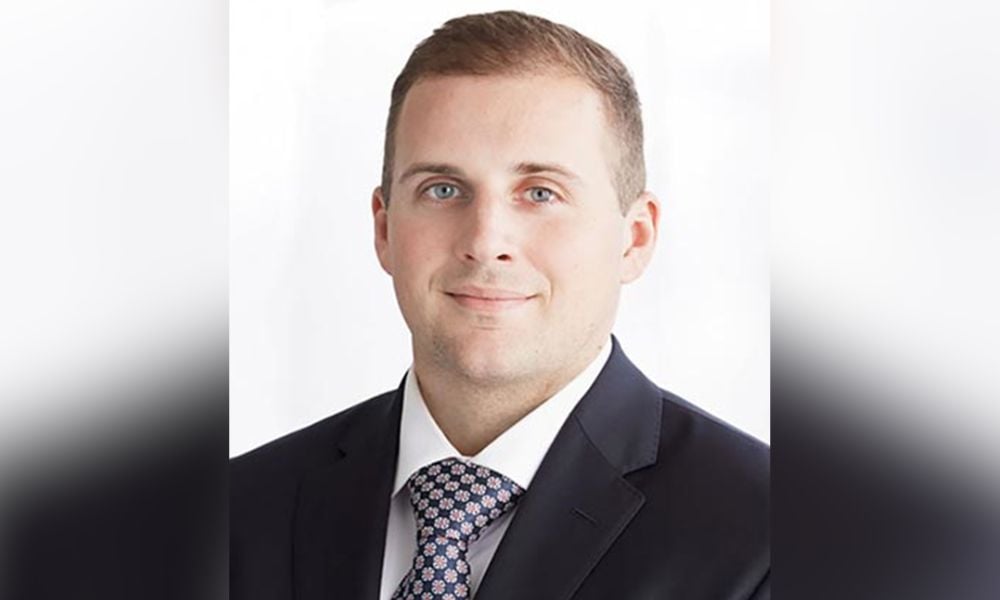
Neinstein's Brandyn Di Domenico on the dangers of hospital staff not following hospital policies

This article was created in partnership with Neinstein Personal Injury Lawyers.
Greg Hudson of Canadian Lawyer spoke with Brandyn Di Domenico, associate at Neinstein, on the importance of hospital staff knowing, and following, hospital policies.
If an organization has a policy that isn’t followed—or even known about—have they really made a policy? And more importantly, in that situation, who is responsible: the policy-maker or the people for whom the policy was made? Of course, these aren’t just philosophical questions. They are at the heart of many medical malpractice cases, where following policy can mean the difference between life and death.
Brandyn Di Domenico, associate at Neinstein, is working on such a case. A woman was admitted to the psychiatric ward of a hospital after attempting suicide. After a further attempt while there, she was elevated to what was supposed to be a higher level of observation. “There was a number of policies in place in terms of the frequency of monitoring and what that monitoring required. And it was largely just not followed,” says Di Domenico. While there was a low-res, black-and-white video feed of her room, Di Domenico says that monitoring according to the hospital’s policy required more than that. “She was under the blanket where she strangled herself in bed and passed away.”
According to Di Domenico, this occurrence is what’s called a Never Event at the hospital—it should never have happened. But the irony in this case makes it even more galling. “That you’re having someone commit suicide in the hospital like that, especially someone who is there because they are suicidal and was on an elevated level of monitoring,” he says. “It was a sad example of having policies to avoid that very issue, and they weren’t followed by nursing staff.”
The problem isn’t the policies. Hospitals are legally mandated to guide and govern the doctors and nurses that work within their walls. “Hospitals aren’t just required to have those policies, but actually take reasonable steps to ensure that their policies are being followed,” he says. “In our cases, we find either people weren’t aware of the policies at all, or they were aware of them, but there’s a misunderstanding between parties: the doctor may think the policy requires them to do X, but a hospital representative says it required Y. Quite clearly there’s a disconnect.”
But what do ‘reasonable steps’ looks like in a healthcare system that’s understaffed and often overwhelmed? Is an email enough? Di Domenico has his doubts. “You must assume the limited resources impacts on the amount of time you have to go carefully through those emails. Policies are in place to specifically ensure the safety of someone who's in an acute state of distress and psychiatric illness, and you have different nurses having a differing understanding of what they're required to do in circumstances that are supposed to be pretty regulated by the policy. You can see how problems can arise. It leaves a lot to be desired regarding the steps the hospitals take to ensure that their policies are known and followed.”
Adding to the confusion is the somewhat unique way doctors are employed. Because they draw their pay from the province, they aren’t technically hospital employees, as opposed to nurses who are. “Because of that distinction, you typically see a lot of finger-pointing between hospital and physician defendants. With doctors saying they weren’t advised of the policy or unaware of it.”
To be clear, policies don’t set the standard of care—the two are not synonymous—and in a medical malpractice case, whether or not a standard of care was breached is ultimately the most important. But, policies inform the standard of care. The two are intrinsically connected.
As such, Di Domenico advises lawyers in similar cases to get their hands on the relevant policies early on. “While you're very early on, developing a theory of the case and understanding what happened or didn't happen having those policies at your disposal can go a long way. You review the medical records and review the policies together. And you can point to various breaches of policies early on; it can help in terms of potentially facilitating early resolution.”
Or, at the very least, answer some very important questions.
Brandyn Di Domenico is an Associate at Neinstein Personal Injury Lawyers LLP. His practice focuses on medical malpractice litigation, as well as other areas of civil litigation including motor vehicle accidents and product liability. He is known for his excellent analytical skills and client-focused approach to resolving legal disputes.
Neinstein Personal Injury Lawyers was named as Canada’s Best Personal Injury Law Firms. Read the full winners here.